#kiby answers
Explore tagged Tumblr posts
Note
Minho really is sacrificial to Kitty it's insane she probably doesn't realize it though who would he ruin his clothes for if not her and even when he's mad at her or he just saw her kiss yuri he's still there for her. I bet he would've ran after Kitty when she walked away narrating that she fell for Minho if he didn't find out about Stella. I still can't get over how much he loves Kitty's flaws he finds them endearing?! wtf Minho I already love you why are you making me love your character even more.
i think kitty brings out minho’s most loving and caring side which is just tew good… no wonder minho has to hide it behind teasing and poking at kitty bc if he doesn’t he may explode out of love for her 😭 she’s a whirlwind that came crashing into his life and now he’s stuck spinning in it forever
#xo kitty#xo kitty season 2#xo kitty spoilers#xo kitty season 2 spoilers#mooncovey#kitty x min ho#kiby answers
63 notes
·
View notes
Text
Shikigami and onmyōdō through history: truth, fiction and everything in between
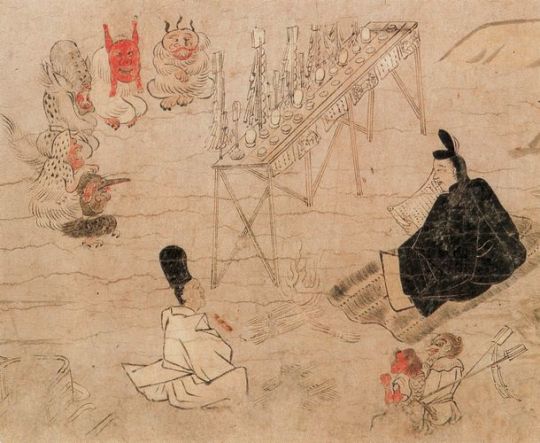
Abe no Seimei exorcising disease spirits (疫病神, yakubyōgami), as depicted in the Fudō Riyaku Engi Emaki. Two creatures who might be shikigami are visible in the bottom right corner (wikimedia commons; identification following Bernard Faure’s Rage and Ravage, pp. 57-58)
In popular culture, shikigami are basically synonymous with onmyōdō. Was this always the case, though? And what is a shikigami, anyway? These questions are surprisingly difficult to answer. I’ve been meaning to attempt to do so for a longer while, but other projects kept getting in the way. Under the cut, you will finally be able to learn all about this matter.
This isn’t just a shikigami article, though. Since historical context is a must, I also provide a brief history of onmyōdō and some of its luminaries. You will also learn if there were female onmyōji, when stars and time periods turn into deities, what onmyōdō has to do with a tale in which Zhong Kui became a king of a certain city in India - and more!
The early days of onmyōdō In order to at least attempt to explain what the term shikigami might have originally entailed, I first need to briefly summarize the history of onmyōdō (陰陽道). This term can be translated as “way of yin and yang”, and at the core it was a Japanese adaptation of the concepts of, well, yin and yang, as well as the five elements. They reached Japan through Daoist and Buddhist sources. Daoism itself never really became a distinct religion in Japan, but onmyōdō is arguably among the most widespread adaptations of its principles in Japanese context.
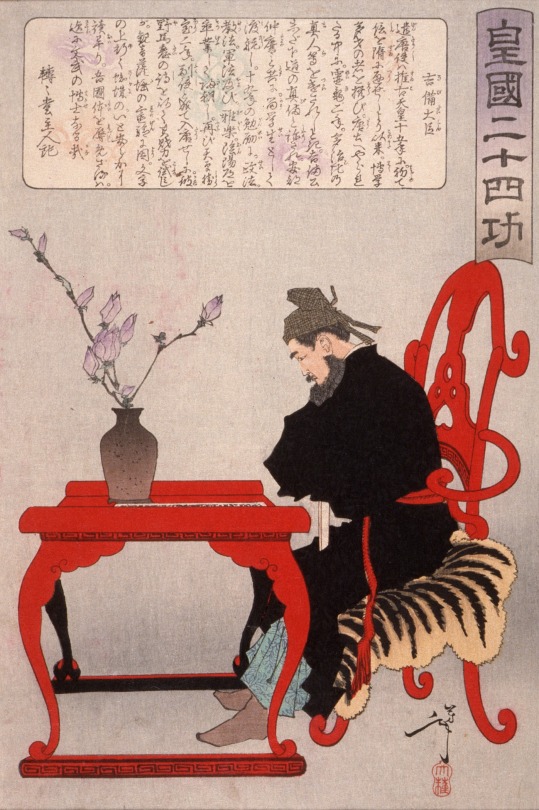
Kibi no Makibi, as depicted by Yoshitoshi Tsukioka (wikimedia commons)
It’s not possible to speak of a singular founder of onmyōdō comparable to the patriarchs of Buddhist schools. Bernard Faure notes that in legends the role is sometimes assigned to Kibi no Makibi, an eighth century official who spent around 20 years in China. While he did bring many astronomical treatises with him when he returned, this is ultimately just a legend which developed long after he passed away.
In reality onmyōdō developed gradually starting with the sixth century, when Chinese methods of divination and treatises dealing with these topics first reached Japan. Early on Buddhist monks from the Korean kingdom of Baekje were the main sources of this knowledge. We know for example that the Soga clan employed such a specialist, a certain Gwalleuk (観勒; alternatively known under the Japanese reading of his name, Kanroku).
Obviously, divination was viewed as a very serious affair, so the imperial court aimed to regulate the continental techniques in some way. This was accomplished by emperor Tenmu with the formation of the onmyōryō (陰陽寮), “bureau of yin and yang” as a part of the ritsuryō system of governance. Much like in China, the need to control divination was driven by the fears that otherwise it would be used to legitimize courtly intrigues against the emperor, rebellions and other disturbances. Officials taught and employed by onmyōryō were referred to as onmyōji (陰陽師). This term can be literally translated as “yin-yang master”. In the Nara period, they were understood essentially as a class of public servants. Their position didn’t substantially differ from that of other specialists from the onmyōryō: calendar makers, officials responsible for proper measurement of time and astrologers. The topics they dealt with evidently weren’t well known among commoners, and they were simply typical members of the literate administrative elite of their times.
Onmyōdō in the Heian period: magic, charisma and nobility
The role of onmyōji changed in the Heian period. They retained the position of official bureaucratic diviners in employ of the court, but they also acquired new duties. The distinction between them and other onmyōryō officials became blurred. Additionally their activity extended to what was collectively referred to as jujutsu (呪術), something like “magic” though this does not fully reflect the nuances of this term. They presided over rainmaking rituals, purification ceremonies, so-called “earth quelling”, and establishing complex networks of temporal and directional taboos.
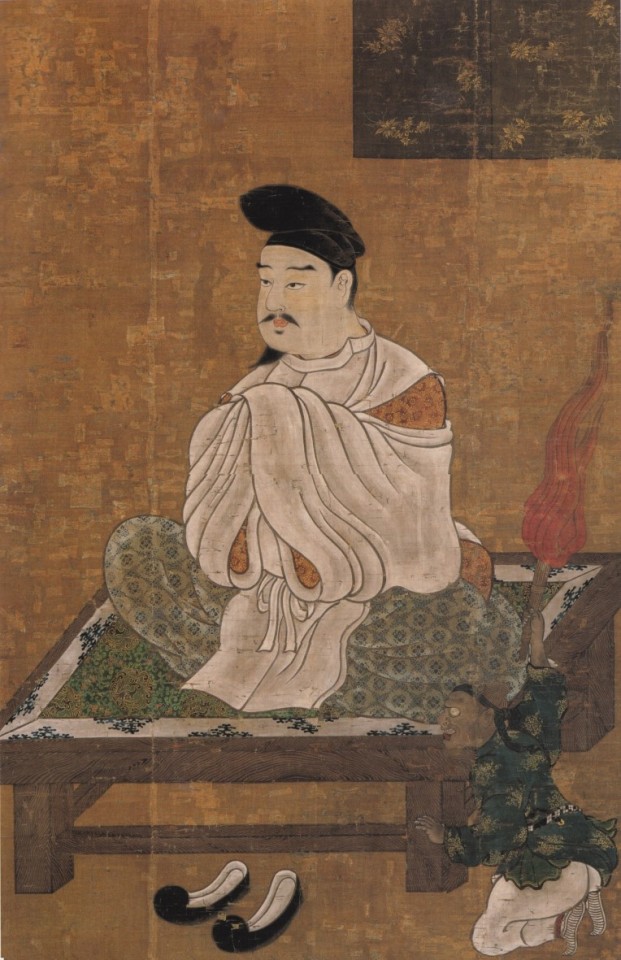
A Muromachi period depiction of Abe no Seimei (wikimedia commons)
The most famous historical onmyōji like Kamo no Yasunori and his student Abe no Seimei were active at a time when this version of onmyōdō was a fully formed - though obviously still evolving - set of practices and beliefs. In a way they represented a new approach, though - one in which personal charisma seemed to matter just as much, if not more, than official position. This change was recognized as a breakthrough by at least some of their contemporaries. For example, according to the diary of Minamoto no Tsuneyori, the Sakeiki (左經記), “in Japan, the foundations of onmyōdō were laid by Yasunori”.
The changes in part reflected the fact that onmyōji started to be privately contracted for various reasons by aristocrats, in addition to serving the state. Shin’ichi Shigeta notes that it essentially turned them from civil servants into tradespeople. However, he stresses they cannot be considered clergymen: their position was more comparable to that of physicians, and there is no indication they viewed their activities as a distinct religion. Indeed, we know of multiple Heian onmyōji, like Koremune no Fumitaka or Kamo no Ieyoshi, who by their own admission were devout Buddhists who just happened to work as professional diviners.
Shin’ichi Shigeta notes is evidence that in addition to the official, state-sanctioned onmyōji, “unlicensed” onmyōji who acted and dressed like Buddhist clergy, hōshi onmyōji (法師陰陽師) existed. The best known example is Ashiya Dōman, a mainstay of Seimei legends, but others are mentioned in diaries, including the famous Pillow Book. It seems nobles particularly commonly employed them to curse rivals. This was a sphere official onmyōji abstained from due to legal regulations. Curses were effectively considered crimes, and government officials only performed apotropaic rituals meant to protect from them. The Heian period version of onmyōdō captivated the imagination of writers and artists, and its slightly exaggerated version present in classic literature like Konjaku Monogatari is essentially what modern portrayals in fiction tend to go back to.
Medieval onmyōdō: from abstract concepts to deities
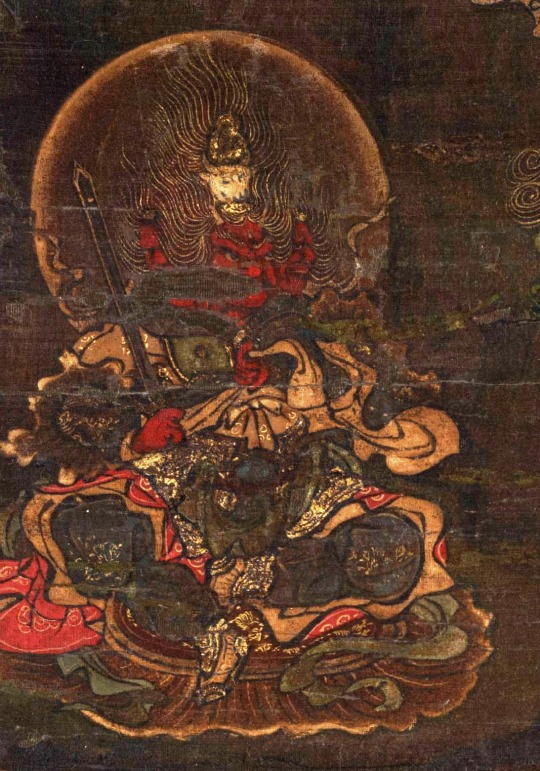
Gozu Tennō (wikimedia commons)
Further important developments occurred between the twelfth and fourteenth centuries. This period was the beginning of the Japanese “middle ages” which lasted all the way up to the establishment of the Tokugawa shogunate. The focus in onmyōdō in part shifted towards new, or at least reinvented, deities, such as calendarical spirits like Daishōgun (大将軍) and Ten’ichijin (天一神), personifications of astral bodies and concepts already crucial in earlier ceremonies. There was also an increased interest in Chinese cosmological figures like Pangu, reimagined in Japan as “king Banko”. However, the most famous example is arguably Gozu Tennō, who you might remember from my Susanoo article.
The changes in medieval onmyōdō can be described as a process of convergence with esoteric Buddhism. The points of connection were rituals focused on astral and underworld deities, such as Taizan Fukun or Shimei (Chinese Siming). Parallels can be drawn between this phenomenon and the intersection between esoteric Buddhism and some Daoist schools in Tang China. Early signs of the development of a direct connection between onmyōdō and Buddhism can already be found in sources from the Heian period, for example Kamo no Yasunori remarked that he and other onmyōji depend on the same sources to gain proper understanding of ceremonies focused on the Big Dipper as Shingon monks do.
Much of the information pertaining to the medieval form of onmyōdō is preserved in Hoki Naiden (ほき内伝; “Inner Tradition of the Square and the Round Offering Vessels”), a text which is part divination manual and part a collection of myths. According to tradition it was compiled by Abe no Seimei, though researchers generally date it to the fourteenth century. For what it’s worth, it does seem likely its author was a descendant of Seimei, though. Outside of specialized scholarship Hoki Naiden is fairly obscure today, but it’s worth noting that it was a major part of the popular perception of onmyōdō in the Edo period. A novel whose influence is still visible in the modern image of Seimei, Abe no Seimei Monogatari (安部晴明物語), essentially revolves around it, for instance.
Onmyōdō in the Edo period: occupational licensing
Novels aside, the first post-medieval major turning point for the history of onmyōdō was the recognition of the Tsuchimikado family as its official overseers in 1683. They were by no means new to the scene - onmyōji from this family already served the Ashikaga shoguns over 250 years earlier. On top of that, they were descendants of the earlier Abe family, the onmyōji par excellence. The change was not quite the Tsuchimikado’s rise, but rather the fact the government entrusted them with essentially regulating occupational licensing for all onmyōji, even those who in earlier periods existed outside of official administration.
As a result of the new policies, various freelance practitioners could, at least in theory, obtain a permit to perform the duties of an onmyōji. However, as the influence of the Tsuchimikado expanded, they also sought to oblige various specialists who would not be considered onmyōji otherwise to purchase licenses from them. Their aim was to essentially bring all forms of divination under their control. This extended to clergy like Buddhist monks, shugenja and shrine priests on one hand, and to various performers like members of kagura troupes on the other.
Makoto Hayashi points out that while throughout history onmyōji has conventionally been considered a male occupation, it was possible for women to obtain licenses from the Tsuchimikado. Furthermore, there was no distinct term for female onmyōji, in contrast with how female counterparts of Buddhist monks, shrine priests and shugenja were referred to with different terms and had distinct roles defined by their gender. As far as I know there’s no earlier evidence for female onmyōji, though, so it’s safe to say their emergence had a lot to do with the specifics of the new system. It seems the poems of the daughter of Kamo no Yasunori (her own name is unknown) indicate she was familiar with yin-yang theory or at least more broadly with Chinese philosophy, but that’s a topic for a separate article (stay tuned), and it's not quite the same, obviously.
The Tsuchimikado didn’t aim to create a specific ideology or systems of beliefs. Therefore, individual onmyōji - or, to be more accurate, individual people with onmyōji licenses - in theory could pursue new ideas. This in some cases lead to controversies: for instance, some of the people involved in the (in)famous 1827 Osaka trial of alleged Christians (whether this label really is applicable is a matter of heated debate) were officially licensed onmyōji. Some of them did indeed possess translated books written by Portuguese missionaries, which obviously reflected Catholic outlook. However, Bernard Faure suggests that some of the Edo period onmyōji might have pursued Portuguese sources not strictly because of an interest in Catholicism but simply to obtain another source of astronomical knowledge.
The legacy of onmyōdō
In the Meiji period, onmyōdō was banned alongside shugendō. While the latter tradition experienced a revival in the second half of the twentieth century, the former for the most part didn’t. However, that doesn’t mean the history of onmyōdō ends once and for all in the second half of the nineteenth century.
Even today in some parts of Japan there are local religious traditions which, while not identical with historical onmyōdō, retain a considerable degree of influence from it. An example often cited in scholarship is Izanagi-ryū (いざなぎ流) from the rural Monobe area in the Kōchi Prefecture. Mitsuki Ueno stresses that the occasional references to Izanagi-ryū as “modern onmyōdō” in literature from the 1990s and early 2000s are inaccurate, though. He points out they downplay the unique character of this tradition, and that it shows a variety of influences. Similar arguments have also been made regarding local traditions from the Chūgoku region.
Until relatively recently, in scholarship onmyōdō was basically ignored as superstition unworthy of serious inquiries. This changed in the final decades of the twentieth century, with growing focus on the Japanese middle ages among researchers. The first monographs on onmyōdō were published in the 1980s. While it’s not equally popular as a subject of research as esoteric Buddhism and shugendō, formerly neglected for similar reasons, it has nonetheless managed to become a mainstay of inquiries pertaining to the history of religion in Japan.
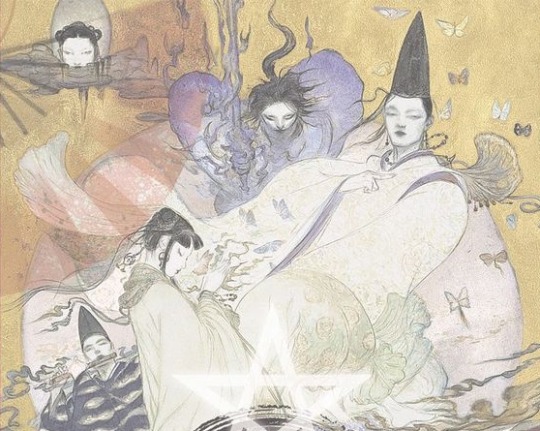
Yoshitaka Amano's illustration of Baku Yumemakura's fictionalized portrayal of Abe no Seimei (right) and other characters from his novels (reproduced here for educational purposes only)
Of course, it’s also impossible to talk about onmyōdō without mentioning the modern “onmyōdō boom”. Starting with the 1980s, onmyōdō once again became a relatively popular topic among writers. Novel series such as Baku Yumemakura’s Onmyōji, Hiroshi Aramata’s Teito Monogatari or Natsuhiko Kyōgoku’s Kyōgōkudō and their adaptations in other media once again popularized it among general audiences. Of course, since these are fantasy or mystery novels, their historical accuracy tends to vary (Yumemakura in particular is reasonably faithful to historical literature, though). Still, they have a lasting impact which would be impossible to accomplish with scholarship alone.
Shikigami: historical truth, historical fiction, or both?
You might have noticed that despite promising a history of shikigami, I haven’t used this term even once through the entire crash course in history of onmyōdō. This was a conscious choice. Shikigami do not appear in any onmyōdō texts, even though they are a mainstay of texts about onmyōdō, and especially of modern literature involving onmyōji.
It would be unfair to say shikigami and their prominence are merely a modern misconception, though. Virtually all of the famous legends about onmyōji feature shikigami, starting with the earliest examples from the eleventh century. Based on Konjaku Monogatari, there evidently was a fascination with shikigami at the time of its compilation. Fujiwara no Akihira in the Shinsarugakuki treats the control of shikigami as an essential skill of an onmyōji, alongside the abilities to “freely summon the twelve guardian deities, call thirty-six types of wild birds (...), create spells and talismans, open and close the eyes of kijin (鬼神; “demon gods”), and manipulate human souls”.
It is generally agreed that such accounts, even though they belong to the realm of literary fiction, can shed light on the nature and importance of shikigami. They ultimately reflect their historical context to some degree. Furthermore, it is not impossible that popular understanding of shikigami based on literary texts influenced genuine onmyōdō tradition. It’s worth pointing out that today legends about Abe no Seimei involving them are disseminated by two contemporary shrines dedicated to him, the Seimei Shrine (晴明神社) in Kyoto and the Abe no Seimei Shrine (安倍晴明神社) in Osaka. Interconnected networks of exchange between literature and religious practice are hardly a unique or modern phenomenon.
However, even with possible evidence from historical literature taken into account, it is not easy to define shikigami. The word itself can be written in three different ways: 式神 (or just 式), 識神 and 職神, with the first being the default option. The descriptions are even more varied, which understandably lead to the rise of numerous interpretations in modern scholarship. Carolyn Pang in her recent treatments of shikigami, which you can find in the bibliography, has recently divided them into five categories. I will follow her classification below.
Shikigami take 1: rikujin-shikisen
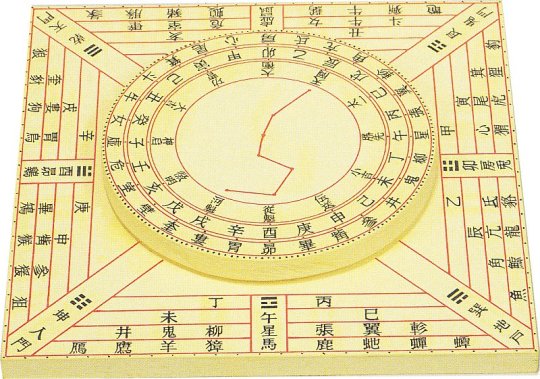
An example of shikiban, the divination board used in rikujin-shikisen (Museum of Kyoto, via onmarkproductions.com; reproduced here for educational purposes only)
A common view is that shikigami originate as a symbolic representation of the power of shikisen (式占) or more specifically rikujin-shikisen (六壬式占), the most common form of divination in onmyōdō. It developed from Chinese divination methods in the Nara period, and remained in the vogue all the way up to the sixteenth century, when it was replaced by ekisen (易占), a method derived from the Chinese Book of Changes.
Shikisen required a special divination board known as shikiban (式盤), which consists of a square base, the “earth panel” (地盤, jiban), and a rotating circle placed on top of it, the “heaven panel” (天盤, tenban). The former was marked with twelve points representing the signs of the zodiac and the latter with representations of the “twelve guardians of the months” (十二月将, jūni-gatsushō; their identity is not well defined). The heaven panel had to be rotated, and the diviner had to interpret what the resulting combination of symbols represents. Most commonly, it was treated as an indication whether an unusual phenomenon (怪/恠, ke) had positive or negative implications. It’s worth pointing out that in the middle ages the shikiban also came to be used in some esoteric Buddhist rituals, chiefly these focused on Dakiniten, Shōten and Nyoirin Kannon. However, they were only performed between the late Heian and Muromachi periods, and relatively little is known about them. In most cases the divination board was most likely modified to reference the appropriate esoteric deities.
Shikigami take 2: cognitive abilities
While the view that shikigami represented shikisen is strengthened by the fact both terms share the kanji 式, a variant writing, 識神, lead to the development of another proposal. Since the basic meaning of 識 is “consciousness”, it is sometimes argued that shikigami were originally an “anthropomorphic realization of the active psychological or mental state”, as Caroline Pang put it - essentially, a representation of the will of an onmyōji. Most of the potential evidence in this case comes from Buddhist texts, such as Bosatsushotaikyō (菩薩処胎経).
However, Bernard Faure assumes that the writing 識神 was a secondary reinterpretation, basically a wordplay based on homonymy. He points out the Buddhist sources treat this writing of shikigami as a synonym of kushōjin (倶生神). This term can be literally translated as “deities born at the same time”. Most commonly it designates a pair of minor deities who, as their name indicates, come into existence when a person is born, and then records their deeds through their entire life. Once the time for Enma’s judgment after death comes, they present him with their compiled records. It has been argued that they essentially function like a personification of conscience.
Shikigami take 3: energy
A further speculative interpretation of shikigami in scholarship is that this term was understood as a type of energy present in objects or living beings which onmyōji were believed to be capable of drawing out and harnessing to their ends. This could be an adaptation of the Daoist notion of qi (氣). If this definition is correct, pieces of paper or wooden instruments used in purification ceremonies might be examples of objects utilized to channel shikigami.
The interpretation of shikigami as a form of energy is possibly reflected in Konjaku Monogatari in the tale The Tutelage of Abe no Seimei under Tadayuki. It revolves around Abe no Seimei’s visit to the house of the Buddhist monk Kuwanten from Hirosawa. Another of his guests asks Seimei if he is capable of killing a person with his powers, and if he possesses shikigami. He affirms that this is possible, but makes it clear that it is not an easy task. Since the guests keep urging him to demonstrate nonetheless, he promptly demonstrates it using a blade of grass. Once it falls on a frog, the animal is instantly crushed to death. From the same tale we learn that Seimei’s control over shikigami also let him remotely close the doors and shutters in his house while nobody was inside.
Shikigami take 4: curse As I already mentioned, arts which can be broadly described as magic - like the already mentioned jujutsu or juhō (呪法, “magic rituals”) - were regarded as a core part of onmyōji’s repertoire from the Heian period onward. On top of that, the unlicensed onmyōji were almost exclusively associated with curses. Therefore, it probably won’t surprise you to learn that yet another theory suggests shikigami is simply a term for spells, curses or both. A possible example can be found in Konjaku Monogatari, in the tale Seimei sealing the young Archivist Minor Captains curse - the eponymous curse, which Seimei overcomes with protective rituals, is described as a shikigami.

Kunisuda Utagawa's illustration of an actor portraying Dōman in a kabuki play (wikimedia commons)
Similarities between certain descriptions of shikigami and practices such as fuko (巫蠱) and goraihō (五雷法) have been pointed out. Both of these originate in China. Fuko is the use of poisonous, venomous or otherwise negatively perceived animals to create curses, typically by putting them in jars, while goraihō is the Japanese version of Daoist spells meant to control supernatural beings, typically ghosts or foxes. It’s worth noting that a legend according to which Dōman cursed Fujiwara no Michinaga on behalf of lord Horikawa (Fujiwara no Akimitsu) involves him placing the curse - which is itself not described in detail - inside a jar.
Mitsuki Ueno notes that in the Kōchi Prefecture the phrase shiki wo utsu, “to strike with a shiki”, is still used to refer to cursing someone. However, shiki does not necessarily refer to shikigami in this context, but rather to a related but distinct concept - more on that later.
Shikigami take 5: supernatural being
While all four definitions I went through have their proponents, yet another option is by far the most common - the notion of shikigami being supernatural beings controlled by an onmyōji. This is essentially the standard understanding of the term today among general audiences. Sometimes attempts are made to identify it with a specific category of supernatural beings, like spirits (精霊, seirei), kijin or lesser deities (下級神, kakyū shin). However, none of these gained universal support. Generally speaking, there is no strong indication that shikigami were necessarily imagined as individualized beings with distinct traits.
The notion of shikigami being supernatural beings is not just a modern interpretation, though, for the sake of clarity. An early example where the term is unambiguously used this way is a tale from Ōkagami in which Seimei sends a nondescript shikigami to gather information. The entity, who is not described in detail, possesses supernatural skills, but simultaneously still needs to open doors and physically travel.
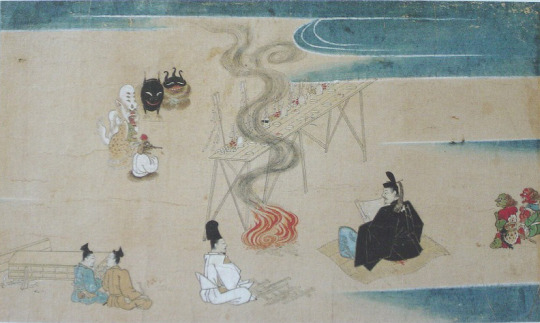
An illustration from Nakifudō Engi Emaki (wikimedia commons)
In Genpei Jōsuiki there is a reference to Seimei’s shikigami having a terrifying appearance which unnerved his wife so much he had to order the entities to hide under a bride instead of residing in his house. Carolyn Pang suggests that this reflects the demon-like depictions from works such as Abe no Seimei-kō Gazō (安倍晴明公画像; you can see it in the Heian section), Fudōriyaku Engi Emaki and Nakifudō Engi Emaki.
Shikigami and related concepts

A gohō dōji, as depicted in the Shigisan Engi Emaki (wikimedia commons)
The understanding of shikigami as a “spirit servant” of sorts can be compared with the Buddhist concept of minor protective deities, gohō dōji (護法童子; literally “dharma-protecting lads”). These in turn were just one example of the broad category of gohō (護法), which could be applied to virtually any deity with protective qualities, like the historical Buddha’s defender Vajrapāṇi or the Four Heavenly Kings. A notable difference between shikigami and gohō is the fact that the former generally required active summoning - through chanting spells and using mudras - while the latter manifested on their own in order to protect the pious. Granted, there are exceptions. There is a well attested legend according to which Abe no Seimei’s shikigami continued to protect his residence on own accord even after he passed away. Shikigami acting on their own are also mentioned in Zoku Kojidan (続古事談). It attributes the political downfall of Minamoto no Takaakira (源高明; 914–98) to his encounter with two shikigami who were left behind after the onmyōji who originally summoned them forgot about them.
A degree of overlap between various classes of supernatural helpers is evident in texts which refer to specific Buddhist figures as shikigami. I already brought up the case of the kushōjin earlier. Another good example is the Tendai monk Kōshū’s (光宗; 1276–1350) description of Oto Gohō (乙護法). He is “a shikigami that follows us like the shadow follows the body. Day or night, he never withdraws; he is the shikigami that protects us” (translation by Bernard Faure). This description is essentially a reversal of the relatively common title “demon who constantly follow beings” (常随魔, jōzuima). It was applied to figures such as Kōjin, Shōten or Matarajin, who were constantly waiting for a chance to obstruct rebirth in a pure land if not placated properly.
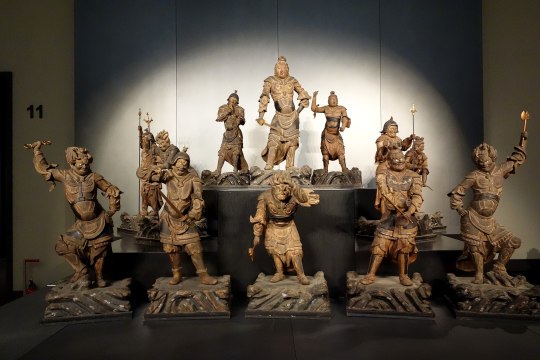
The Twelve Heavenly Generals (Tokyo National Museum, via wikimedia commons)
A well attested group of gohō, the Twelve Heavenly Generals (十二神将, jūni shinshō), and especially their leader Konpira (who you might remember from my previous article), could be labeled as shikigami. However, Fujiwara no Akihira’s description of onmyōji skills evidently presents them as two distinct classes of beings.
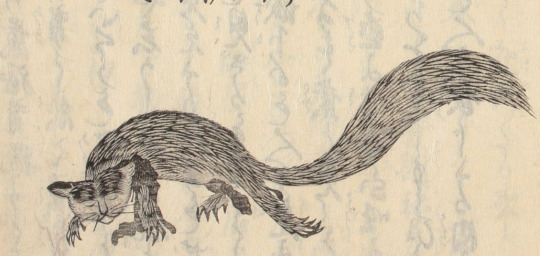
A kuda-gitsune, as depicted in Shōzan Chomon Kishū by Miyoshi Shōzan (Waseda University History Museum; reproduced here for educational purposes only)
Granted, Akihira also makes it clear that controlling shikigami and animals are two separate skills. Meanwhile, there is evidence that in some cases animal familiars, especially kuda-gitsune used by iizuna (a term referring to shugenja associated with the cult of, nomen omen, Iizuna Gongen, though more broadly also something along the lines of “sorcerer”), were perceived as shikigami.
Beliefs pertaining to gohō dōji and shikigami seemingly merged in Izanagi-ryū, which lead to the rise of the notion of shikiōji (式王子; ōji, literally “prince”, can be another term for gohō dōji). This term refers to supernatural beings summoned by a ritual specialist (祈祷師, kitōshi) using a special formula from doctrinal texts (法文, hōmon). They can fulfill various functions, though most commonly they are invoked to protect a person, to remove supernatural sources of diseases, to counter the influence of another shikiōji or in relation to curses.
Tenkeisei, the god of shikigami
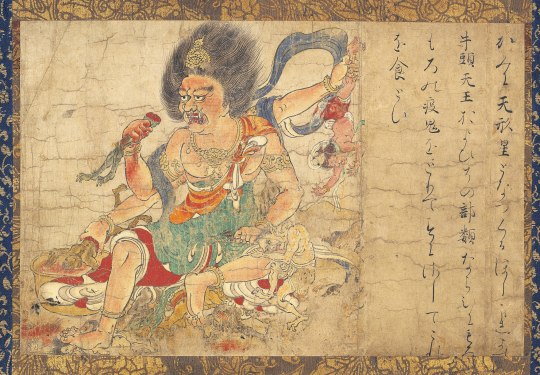
Tenkeisei (wikimedia commons)
The final matter which warrants some discussion is the unusual tradition regarding the origin of shikigami which revolves around a deity associated with this concept.
In the middle ages, a belief that there were exactly eighty four thousand shikigami developed. Their source was the god Tenkeisei (天刑星; also known as Tengyōshō). His name is the Japanese reading of Chinese Tianxingxing. It can be translated as “star of heavenly punishment”. This name fairly accurately explains his character. He was regarded as one of the so-called “baleful stars” (凶星, xiong xing) capable of controlling destiny. The “punishment” his name refers to is his treatment of disease demons (疫鬼, ekiki). However, he could punish humans too if not worshiped properly.
Today Tenkeisei is best known as one of the deities depicted in a series of paintings known as Extermination of Evil, dated to the end of the twelfth century. He has the appearance of a fairly standard multi-armed Buddhist deity. The anonymous painter added a darkly humorous touch by depicting him right as he dips one of the defeated demons in vinegar before eating him. Curiously, his adversaries are said to be Gozu Tennō and his retinue in the accompanying text. This, as you will quickly learn, is a rather unusual portrayal of the relationship between these two deities.
I’m actually not aware of any other depictions of Tenkeisei than the painting you can see above. Katja Triplett notes that onmyōdō rituals associated with him were likely surrounded by an aura of secrecy, and as a result most depictions of him were likely lost or destroyed. At the same time, it seems Tenkeisei enjoyed considerable popularity through the Kamakura period. This is not actually paradoxical when you take the historical context into account: as I outlined in my recent Amaterasu article, certain categories of knowledge were labeled as secret not to make their dissemination forbidden, but to imbue them with more meaning and value.
Numerous talismans inscribed with Tenkeisei’s name are known. Furthermore, manuals of rituals focused on him have been discovered. The best known of them, Tenkeisei-hō (天刑星法; “Tenkeisei rituals”), focuses on an abisha (阿尾捨, from Sanskrit āveśa), a ritual involving possession by the invoked deity. According to a legend was transmitted by Kibi no Makibi and Kamo no Yasunori. The historicity of this claim is doubtful, though: the legend has Kamo no Yasunori visit China, which he never did. Most likely mentioning him and Makibi was just a way to provide the text with additional legitimacy.
Other examples of similar Tenkeisei manuals include Tenkeisei Gyōhō (天刑星行法; “Methods of Tenkeisei Practice”) and Tenkeisei Gyōhō Shidai (天刑星行法次第; “Methods of Procedure for the Tenkeisei Practice”). Copies of these texts have been preserved in the Shingon temple Kōzan-ji.
The Hoki Naiden also mentions Tenkeisei. It equates him with Gozu Tennō, and explains both of these names refer to the same deity, Shōki (商貴), respectively in heaven and on earth. While Shōki is an adaptation of the famous Zhong Kui, it needs to be pointed out that here he is described not as a Tang period physician but as an ancient king of Rajgir in India. Furthermore, he is a yaksha, not a human. This fairly unique reinterpretation is also known from the historical treatise Genkō Shakusho. Post scriptum The goal of this article was never to define shikigami. In the light of modern scholarship, it’s basically impossible to provide a single definition in the first place. My aim was different: to illustrate that context is vital when it comes to understanding obscure historical terms. Through history, shikigami evidently meant slightly different things to different people, as reflected in literature. However, this meaning was nonetheless consistently rooted in the evolving perception of onmyōdō - and its internal changes. In other words, it reflected a world which was fundamentally alive. The popular image of Japanese culture and religion is often that of an artificial, unchanging landscape straight from the “age of the gods”, largely invented in the nineteenth century or later to further less than noble goals. The case of shikigami proves it doesn’t need to be, though. The malleable, ever-changing image of shikigami, which remained a subject of popular speculation for centuries before reemerging in a similar role in modern times, proves that the more complex reality isn’t necessarily any less interesting to new audiences.
Bibliography
Bernard Faure, A Religion in Search of a Founder?
Idem, Rage and Ravage (Gods of Medieval Japan vol. 3)
Makoto Hayashi, The Female Christian Yin-Yang Master
Jun’ichi Koike, Onmyōdō and Folkloric Culture: Three Perspectives for the Development of Research
Irene H. Lin, Child Guardian Spirits (Gohō Dōji) in the Medieval Japanese Imaginaire
Yoshifumi Nishioka, Aspects of Shikiban-Based Mikkyō Rituals
Herman Ooms, Yin-Yang's Changing Clientele, 600-800 (note there is n apparent mistake in one of the footnotes, I'm pretty sure the author wanted to write Mesopotamian astronomy originated 4000 years ago, not 4 millenia BCE as he did; the latter date makes little sense)
Carolyn Pang, Spirit Servant: Narratives of Shikigami and Onmyōdō Developments
Idem, Uncovering Shikigami. The Search for the Spirit Servant of Onmyōdō
Shin’ichi Shigeta, Onmyōdō and the Aristocratic Culture of Everyday Life in Heian Japan
Idem, A Portrait of Abe no Seimei
Katja Triplett, Putting a Face on the Pathogen and Its Nemesis. Images of Tenkeisei and Gozutennō, Epidemic-Related Demons and Gods in Medieval Japan
Mitsuki Umeno, The Origins of the Izanagi-ryū Ritual Techniques: On the Basis of the Izanagi saimon
Katsuaki Yamashita, The Characteristics of On'yōdō and Related Texts
199 notes
·
View notes
Text
OP ch 1120 SPOILERS
My reaction as i read:
hi Denjiro where did you come from? was he just on a walk or did he come to meet w Yamato on purpose? also he's the new daimyo of Kibi? did we know that already or is it a new info i cant remember
also i like how Yamato is like "no need for all this, its ok"
a flashback?
oh... never even crossed my mind to ask why was Clover arrested and let go so many times... thats clever
"answer to good and evil"? what does that mean
oh my god another D family! (how do you even pronounce that surname) i wonder which other characters we know of were/are hiding the initial...
i wonder what changed Vegapunk's mind to continue Ohara's research and risking his life if he couldnt understand why Clover did it those 22 years ago
hi Zeff, Patty :D
oh Robin... this is making me sad
damn Atlas...
wtf was that "snap" coming from Lilith
oh Atlas please dont tell me youre about to do what i think
good job Atlas but can ppl pls stop sacrificing themselves for at least five minutes my heart cant take it
but what about Stussy? she can skywalk so she might be fine?
the Marines are just so out of their depth lol
Luffy can hear Emet! :D Luffy's so confused lol
lmao Emet's immediately annoyed w him i cant
oh Emet, he's so sweet! i love himm!! "i've known Emet for only a couple of chapters but if anything happens to him i'm gonna kill Oda and then myself"
aaaah he's talking to you Luffy! but i like how Oda keeps emphasizing that Luffy is his own person, not Nika, not Joyboy, but Luffy
"but there are those who cannot be stopped" under the imposing worm Peter going in for an attack - love this visual storytelling
uh oh... Emet's rusty
and still fended the worm off! you rock Emet! :D
Saturn doing a jumping spider impression
dont fucking talk to the precious Kuma and Bonney you damn spider!
Atlas! D: my poor heart! this is just Pedro all over again
fuck off, York
dont you dare Emet dont you fucking dare! no more sacrificing yourself! no more blowing yourself up! i said no! D:< (also Peter bit off his arm :( )
oh, right, the general population didn't know Roger was a D
Great chapter as always :D, even though it was painful, can't wait for the next one...
i really hope Emet won't sacrifice himself here but it seems that's where it's headed... dammit!
EDIT: i've thought about this some more and was Joyboy really someone who would instruct his people to sacrifice themselves for him and his cause? that doesn't sound right. so maybe Emet has something else up his sleeve?
also, Emet is the second person to lose their arm to a snake-like monster while protecting Luffy. both Emet and Shanks were also waiting for the awakening of the Nika fruit to make their move it seems. i wonder if there are any other parallels between them...
30 notes
·
View notes
Note
I just wanted to let you know that the person who you drew the Beastars art for recently has been going around asking A LOT of people for free art, which wouldn't be too weird but when they began asking "Multyashka-sweet" for the free art on a now deactivated account & got told no, asked them again on their new account & got told no a second time, began BEGGING random users to ask Multyashka to draw them art of Tao & Kibi in a certain style that artist draws in for some of their commissions.
If you look through "Tao and Kibi" on Tumblr's search & go through the "Lastest" posts [not the Top posts], you should be able to find the evidence easily.
I thought I'd let you know in case you'd like to block, report, or delete the ask from that user.
thank you very much for letting me know !
tbh I didn't mind doing this fanart since i'm a big fan of beastars and it allowed me to have a break from work
but i did notice they asked me for another pairing fanart and thought it looked supicious. I just didn't answer and minded my own business.
But thank you again for that message, that's very sweet of you !
Have a nice day and take care !
0 notes
Text
Dragon Ball E.T. Angel of Death Incorrect Quotes 1
(Durham and Azrael playing Rock-Paper Scissor Punishment Game)
Azrael: Look that way!
Durham: *looks*
Azrael: *Slaps him hard*
Durham: No, that's not the rule! If you look you're safe, also it's a forehead flick not a slap!
Azrael (dawning a fake confused expression while shrugging): Hm...? *American National Anthem Plays*
Durham: Wha! Again, with your "I don't know Japanese" Pose!
(Source: Asobi Asobase)
Louis: *giving his friends a tour of his house*
Louis: ... And remember, no wandering off, and no breaking things.
(Louis leaves the room)
Azrael: Counterpoint; how about we do wander off, consider breaking things and all that other stuff.
(Source: RWBY Volume 7)
(Azrael and friends are currently attending a special one-day class about the future with some of his friends.)
Teacher: Before I look at these papers....
Azrael: ....
Bill: ....
Durham: ....
Kai: ....
Haru: ....
Kibi: ....
Tao: ....
Teacher: You DID answer seriously...right?
All Students: ....
Teacher: Sigh, I'll check them now.
Teacher: *flips over first paper with Azrael's name on it*
Azrael's Paper: (Dream Job: Middle School Student)
Teacher: *slams her fist on the table* See, I knew it! This is what I'm talking about! I beg of you to please take this seriously!
Teacher: *Flips over another*
Kai's Paper: (Dream Job: Ghost)
Teacher: Just die, right now!
Durhams Paper: (Dream Job: Sports Adventurer)
Teacher: WHICH ONE IS IT?!
Bill's Paper: (Dream Job: Teachers' Wife)
Teacher: Wha?! This is just gross!
Haru's Paper: (Dream Job: Science Entertainer)
Teacher: HUH?!
Kibi's Paper: (Dream Job: I don't want to become a lawyer.)
Teacher: Then don't write anything!
Tao's Paper: (Dream Job: Enter College)
Teacher: ....
Teacher: *flips table* MAKE A JOKE!
(Source: Daily Life of High school Boys)
#beastars#beastars crossover#beastars oc#Azrael (oc)#beastars durham#beastars kai#beastars bill#beastars haru#beastars kibi#beastars tao#saiyan oc#crossover oc#dragon ball crossover
1 note
·
View note
Note
https://peapod20001.tumblr.com/post/668415084822986752/phoenix-here-to-teach-the-partners-a-neat-lil
b. but
but kibi doesn't have arms
does she do that with her legs or like
he's just chillin' and oop! your gf's face is under your shirt now

Lmao uh,, the point was mainly to tell them u love em lol 😭 it might not have come across that way tho ffhhgf
But,, the visual of this I find hilarious

Also wait why were u so far into the oc tags
10 notes
·
View notes
Note
Deng boy you are cuteee
h*CK thank you :,,,,,))))
1 note
·
View note
Text
two moods for people who make fanmixes about their faves/RPers who keep a tag for muse-related tunes:
1.) this song exudes strong Muse Feels(TM) because of its instrumentals/the artist’s voice/etc...but the lyrics can’t be applied to anything muse-related/the artist has already publicly stated the song’s intended meaning and it now feels invasive to apply it to a fictional character
2.) this song’s lyrics are highly applicable to the muse...but the song just fucking sucks and you hate listening to it
#ooc#i mean...'All Silver Rusts' by Katy Rose makes me think about post-game Lusamine#but do i really want that song in my music tag? do i really want Katy Rose permanently whining on my blog?#i do not. Katy it's not you-- i'm sure plenty of people enjoy your work...but i'm sorry......'All Silver Rusts' just doesn't slap#it isn't a jam. in fact i can't listen to your droning for any longer than 30 seconds before going all right. that's enough#now 'Amnesia' by pop legend and patron saint of 90s teenagers Justin Timberlake?#THERE'S a jam i can proudly put on my Lusamine blog#'did you really put a Justin Timberlake song on your Lusamine angst blog Kibi?' i hear you asking#the answer is not yet my dear followers..........but soon.
7 notes
·
View notes
Text

@baeddel this piqued my interest so I did some (very cursory) looking around!
While keeping in mind that it’s an anonymous source on the internet, going off of an excerpt of this:
A long time ago, according my grandfather, ever since the Heian practice there’s been this form of Buddhist exorcism: As other answers have mentioned, when a male infant is sickly and seems unlikely to survive early childhood, as it was believed that there was a diety that imparted illnesses only onto male children, would dress and be raised as a girl until the age of seven.
However, that in and of itself got me thinking about Bridget’s setting and that the theme of twins being seen as inauspicious is really common in japanese fiction and that I’m pretty sure in Bridget’s case the idea that identical twins were inauspicious was not the beliefs of a weird cult at all but something closer to local suspicion. In any case, this was an interesting read:
Within written japanese history, the oldest mention of twins and their being referred to as imigo, is in chapters 7 and 12 of the Nihon Shoki with regard to Emperor Keikō.
To quote:
Unto the emperor were born two sons. The first was called Ōusu-no-miko, the send Ousu-no-mikoto. Ōusu-no-miko and Ousu-no-mikoto were born on the same day of the water of the same womb. Because of this this Emperor Keikō was deeply anxious. And shouted “millstone” (usu) at them. [I don’t understand either, but that certainly is what’s written here and in other sources I can find.]”
Such as this was, that very younger twin, Ousu-no-mikoto, grew up to be the greatest hero of ancient Japanese history, who appears as the protagonist as of countless local myths, legends, and epic poetry, Yamato Takeru [He’s much less known outside of Japan, but it’s said that he was responsible for much of the Kofun-era northern expansion of the kingdom Yamato, and many successful campaigns against other early Japanese kingdoms such as Izumo, Kibi, and Koshi.] That in the life of such an epic and tragic figure as Yamato Takeru the text feels it necessary to deliberately point out the status of Takeru as a twin implies that the custom of dislike for twins had already taken root at the time [During the Asuka/Nara period].
The age in which twins were viewed with the most suspicion was the Edo period, and in particular upon the birth of fraternal twins, It was said that they bore the souls of a pair of lovers who died in double-suicide. It’s believed this suspicion dates to the spike in lovers’ suicides due to the popularity of “Sonezaki Shinjuu” by Monzaemon Chikamatsu, which moved Edo and Osaka to pass laws banning theatrical works featuring lovers’ suicides. [hyperlink mine] As a consequence, families would would report one child as a stillbirth, and abandon the child. Around the beginning of the Showa period, the custom of sutego-youji came about, where a newborn twin would be given away for adoption, and the foster parents would rais the child as their own, and the birth parents would swear to never come forward as the child’s parents (This was, of course, illegal).
Going by examples such as these, the custom was not rare, and not only twins but also children born to parents in an inauspicious year for them were also called imigo and given up as sutego-youji. The custom of naming potential imigo “Emiko” if a girl and “Sutekichi” if a boy, to rid them of their inauspicious fate continued up until the postwar period.
62 notes
·
View notes
Note
I've been away since I watched season 2 I can't get over mooncovey and all the scenes but what I really can't get over is how much Minho is in love with her and during that scene where Stella is showing her true colors Minho didn't react much when she was threatening his family but when he threatening KItty his face changed oh god I love them so much I should've waited until season 3 to watch this.
like truly i’m sure he did feel betrayed by stella but i think there was def part of him that
1) didn’t care as much abt being betrayed by her as he would’ve if he wasn’t still in love w kitty
2) was relieved he could trust that kitty truly was looking out for him hence the lack of reaction
also yes i think abt how protective minho is of kitty all the time 🥹
#xo kitty#xo kitty spoilers#xo kitty season 2#xo kitty season 2 spoilers#mooncovey#kitty x min ho#kiby answers
32 notes
·
View notes
Text
I feel like I've seen a lot of the fandom talk about like, where to insectivores or omnivores fit in? And the answer is usually like "society leans toward treating them like herbivores unless they're particularly sharp".
But what I've never seen people really talk about is what are the views on *live* insect consumption? You'd assume not great but only for the reasons it might squick someone irl, but like
Kibi could presumably just, find an anthill and go to town. There's nothing actually making that not food to him. In universe it feels like that'd be as natural as like you going to the park and picking a couple stems of grass to nibble on the white bit.
12 notes
·
View notes
Note
Do you know why Abe-no-Seimei became so popular compared to any other onmyoji in folklore and literature? Is it because of who wrote his stories or something else?
There is no single clear answer. It seems safe to say there are multiple interconnected factors at play.
Seimei’s real career was genuinely extraordinary in some regards. To begin with, it was unusually long. He was around 85 years old when he passed away, and historical sources would indicate that he was still fairly active in old age (in fact, most references to him which are fully verifiable come from the second half of his life). Shin’ichi Shigeta actually argues here that Seimei's longevity in no small part contributed to cementing his legend.
However, it’s hard to argue that the times when Seimei lived were not a factor in its own right too. Institutional backing was no longer the sole reason behind the relevance of individual onmyōji. As I discussed in my recent article, by the middle of the tenth century their clientele expanded. And to find new clients, personal charisma was necessary. The shift started slightly earlier already but it doesn’t seem like the likes of Shigeoka no Kawahito or Kamo no Tadayuki left quite as much of an impression as Seimei and his contemporary Kamo no Yasunori in the long run. Legends do deal with earlier onmyōji at times, or rather reinvent earlier figures, especially Kibi no Makibi, as onmyōji, but this is often merely a way to make Seimei’s or Yasunori’s deeds appear even more amazing by making them a part of centuries old legacies (granted, standalone tales of Makibi appear for example in Konjaku Monogatari already).
Seimei’s personal influence is evident in the fact that he seemingly was responsible for popularizing formerly obscure Taizan Fukun no sai as one of the main onmyōdō rituals (check Shigeta’s article above for more specific evidence). Note that this was a performance so popular the early medieval reinterpretation of Amaterasu was in no small part driven by efforts to make her fit into rituals similar to it and Enmaten-ku. There’s also evidence that Seimei had an impact on the popularity of tsuina, a ceremony originally held only in the court but later also in private houses of nobles which served as a forerunner of modern setsubun.
The Abe clan remained influential in official onmyōdō circles long after Seimei’s death, and his heirs obviously invoked his fame to validate their own influence. There are texts only compiled after the Heian period which were attributed to him, such as Hoki Naiden. This obviously further contributed to the spread of his legend, making him relevant even as onmyōdō changed.
I don’t think it matters who wrote down the legends though, at least not before the Edo period. However, there are at least some individual elements which absolutely became such a mainstay of modern portrayals of Seimei because of the fame of specific authors who introduced and/or popularized them. A good example would be the Kuzunoha story, which was only invented in the 1600s and attained popularity because of Ryōi Asai’s Abe no Seimei Monogatari (I am not aware of any older legend claiming Seimei was not fully human, unless you want to count the Shuten Dōji variants presenting him as a manifestation of Kannon or Nagarjuna). Another thing which comes to mind as an example of influence of specific works of fiction is portraying Dōman as older than Seimei, which is a convention started by Edo period theatrical performances as far as I know. Dōman's historical counterpart was pretty obviously younger (granted, there's also no evidence he interacts with Seimei). He was still active three years after Seimei’s death, and there’s no indication he was somehow 90+ years old.
Bit of a digression but it’s worth noting Dōman isn’t Seimei’s only rival in the early stories, in Konjaku Monogatari he also faces a certain “fearsome fellow” named Chitoku who does seem to be older than him. He is an unlicensed onmyōji and comes from Harima, so it's easy to draw parallels with Dōman. However, they aren’t really similar characters; while Dōman is pretty firmly portrayed as a shady figure - a curse specialist first and foremost - Chitoku actually seems to utilize his skills to deal with pirates troubling his area. He just learns he’s a big fish in a small pond after unsuccessfully challenging Seimei. Still, I wonder if the two may have merged at some point in popular imagination.
36 notes
·
View notes
Text
BIG NEWS
Here's first of the two fics I wrote for the amazing @zorofanzine!! Leftover sales open on May 10th so check it out! You don't want to miss out on all the top-notch Zoro content <3
[ Read on AO3 ]
----------
Big news! Big news!
The street killer and ronin named Zorojuro has disappeared! After he was apprehended and sentenced to seppuku, he has murdered the Flower Capital’s Magistrate and with him, every single policeman at the station at the time!
A most dangerous criminal! More dangerous than Kamazo the Manslayer! More wicked than Ushimitsu Kozo! And he has disappeared without a trace!
Everyone! Please be wary walking the streets—if you see him, do not engage and alert the authorities!
Watch out for a man with only one eye and three katanas at his waist! He is responsible for the deaths of more than thirty people!
You heard it here first, folks!
Everyone!
Read all about Zorojuro’s crimes right here! Right on this broadsheet, read in detail about the destruction he had caused! The list of victims! His description!
Esteemed people of the Capital!
Come and get your own; you can’t miss this news! So hear! Zorojuro the Magistrate Killer has disappeared! Refer to the wanted signs—aaaaand! This flyer! You can grab yours right here!
—————
In the streets of the Flower Capital, a crowd has gathered. Listening eagerly to the news announcement, asking for the flyers and broadsheets and wanted posters. Talking all over each other, hoping for the newsboy to notice them and hand them the papers with information carefully written on them.
And among these people, stood a lonesome travelling monk with a tengai covering his head. A komuso was a rare sight in the capital but not rare enough to garner any attention—and that seemed to be exactly what the monk clad in a black and white yukata and brown haori with a flower pattern wanted. He stood amidst the crowd silently, a black nodachi with a white cross pattern resting against his shoulder, listening. His tattooed hand shook slightly as he clutched at the flyer with Zorojuro’s likeness on it.
His head turned slightly when the newsboy started shouting again.
—————
Aaaand! Another big news! Big news!
A ghost of a samurai has been appearing all across the Land of Wano! Flower Capital, Ringo, Kibi, Kuri, Udon, and Hakumai—all regions of the country report sightings of this mysterious spectre!
Is he a samurai who was murdered in a war hundreds of years ago? Or a victim of the vile Zorojuro? Is he in cahoots with the gashadokuro who’s been reported to haunt a remote graveyard in the snowy Ringo?
Only one thing is for sure; no one is safe!
We have asked the citizens who’ve met him and they all say the same thing: he is intimidating with a scary face, has green hair, and a scar across one of his eyes. He seems solid, like a real, living human… Except! This samurai’s ghost appears out of nowhere without warning and disappears the exact same way! There one moment, gone the next—only to appear at the other side of the country later the very same day!
We have also approached a few inhabitants of the Flower Capital for opinions and one of their answers stood out among the rest! This man, a toad oil vendor by the name of Usohachi, did not seem scared of the monster in the least! Instead, he had offered us a wild theory: maybe, the ghost is simply hopelessly lost! Wandering out of his grave in search of sake and losing his way so quickly and thoroughly that he is now doomed to wander the regions of our beautiful country with no means to return!
A daring theory that makes you almost pity this wile ghost!
But!
Where lies the truth? And where will this samurai appear next?!
Find the list of all his appearances right here! We have it all, including all the statements we’ve taken!
You don’t want to miss a word of it! So come and take your broadsheet and read all about it!
Now, who wants one?! We have enough to go around!
—————
The monk took a step forward, wordlessly taking one of the flyers before he slowly walked away from the crowds. He followed the main road for a while but then he stepped to the side, disappearing in the shadows of one of the countless narrow, dark alleys.
It was only a long while later, after taking several turns and finding himself in the most secluded place in the entire Flower Capital, that the monk finally stopped—and took off his tengai, revealing the face of a man who had no place in the isolated Land of Wano. A pirate from overseas, a member of the Worst Generation who was dreaded across the entire world.
And this very same man glared at the two flyers in his hands—at Zorojuro the Magistrate Killer and the ghost of the green-haired samurai—and his face twisted in anger. A vein pulsing on his forehead, Trafalgar Law gently leaned his nodachi against the wall next to him before he took a deep breath and gingerly, carefully placed the papers on top of each other, aligning them perfectly—
And ripped them both in half in one smooth movement.
He repeated the process again and again and again until the flyers were barely more than specks of dust.
“I’m going to kill this fucking idiot.”
#one piece#zoro#roronoa zoro#trafalgar law#usopp#law's eternal suffering#wano arc#pre-wano#humor#comedy#law needs a vacation#he's not getting paid enough to deal with the straw hats xD#he thought getting luffy out of sight would be enough but NO#zoro zine#zine stuff#zines#katie does a write#katie pretends to fic
9 notes
·
View notes
Text
English phrases that Gakuto (one of my third-year students) has said in the middle of class, unprompted:
- So sweet! - I like baseball! - Excuse me! - What the FUCK!! - Sexy boy. - OH crazy boy!! - I am a dangerous boy. - I’ll be back. - (imitating me) OH, AMAAAAAAZING!!! - FUCK
#kibi does jet#if he gets an answer wrong he will just shout one of these#him: Yes I do!#me: actually Gakuto-kun the answer is 'No I don't'#him: aw......i like baseball
89 notes
·
View notes
Note
Hebi Anon
Yeah, that little scene of Taro tossing Haruka aside cemented him in my mind as an asshole
Haruka and Saruhara were nothing but nice and helpful this entire episode. They saw he was basically ill and, completely of their own accord, went to find answers and a solution.
Sure the first time it didn't work properly because Jin is an asshole who withholds critical information (about his SON) for no reason, but it did help. Taro would never have been able to save so many people during that chase if they didn't give him that first round of kibi dango. Then they again go out of their way to do it properly. Even when Kaito ends up bringing one too little, Taro even admits that (somehow, why is never explained and that's a writing pet peeve of mine), Haruka's actions made up for that deficit.
And then he just tosses her aside without even a thank you. For what? For laughs? Haruka has been nothing but helpful and he does that? There is no amount of neurodivergency that can excuse that, that's just the actions of an asshole.
Once you get up to the point where I gave up on Donbrothers I'll give a full write up of why I hate Taro (warning in advance, it actually involves some deep seated traumatic rage)
Time to put on my Momoi-Apologist glasses (LOL)
I should preface this first: Your thoughts are completely valid. I can see why you'd dislike Tarou after he throws Haruka halfway across the yard, rip. Seems like he's just taking her effort for granted and being a huge jerkwad. I just hope y'all Momoi antis can take a few deep breathes and come into my analysis with an open mind. Cause I love discussion.
I'm also prefacing that I'll be quoting from academic material and books as well, so prepare for that. This will probably be unnecessarily long so I'm putting a cut here too
:]
Me and Nacho actually discussed Momoi quite a bit, and one thing that had continued to stump me was how Momoi would completely change his personality the moment he transformed.
Dude just idk became iNSANE to me. And so I really was like ???
So here's a set of questions I'm going to try and answer and explain.
(1) Why does Momoi's personality change when he becomes Don Momotaro?
(2) Why does he answer everything he's asked?
(3)Why does he hit or disrespect his teammates or attack them in battle when he says he "doesn't hit people"
Let's get into it.
So first:
" And then he just tosses her aside without even a thank you. For what? For laughs? Haruka has been nothing but helpful and he does that? There is no amount of neurodivergency that can excuse that, that's just the actions of an asshole."
Quoting this down here because I disagree. "There is no amount of neurodivergency that can excuse that, that's just the actions of an asshole." I think its really easy to see Momoi's behaviors and label him an a$$hole.
But he acts like that for a reason.
He's on the spectrum.
I’m not equating being on the spectrum with ‘bad’ or ‘ rude behavior. I’m saying Momoi deals and processes and copes in a different way.
(Is this an excuse? No. But I want it to be noted here that his mind fundamentally works differently. ADHD is similar to Autism in a lot of ways, but there are still a lot of differences, and that doesn't account for differences among individuals as well.)
So let's get to it.
(1) Why does his personality change?
(Inserting a conversation I had with Nacho about this. For context, we where discussing episode 7, when Momoi calls them, Haruka and Haiku, his "companions". Nacho told me what word he was saying and why they reacted like that LOL. )
Nacho:
So tomodachi, to me that word insinuates an affection between two people, like high school classmates. Japanese school, you see the same people you're whole life so your bonds with your school friends are just a tiny step down from family
So it might not necessarily be a deep friendship, but it's the most obviously affectionate
Nakama is more about a bond like you're people on a journey. So like, less affection, but more devotion. Like you feel a strong loyalty to someone, but you might not define yourselves as close in any sense of the word
And then Tarou freaking says that they're his お供 (otomo) LOL!!!!
Which is very, Idk, it sounds archaic
It give me a mental image of a rogue vagabond and is 5 sidekicks. In medieval Japan.
Otomo is different than otmodachi. Like it's spelled different too :))
お供 (otomo) is spelled with the kanji for submit/offer/serve/accompany
Which is why it gives this image to me (rogue vagabond). And why it's HILARIOUS that he called them that.
Basically "you're my sidekick companions"
No wonder his friends were like "HUH????" Truly the appropriate reaction.
Ngl, now that the idea was planted, Tarou does remind me of my autistic family members
Idk, maybe fixated is the wrong word but Idk the correct ones. But having a preference for certain speech patterns and not differing from them to incorporate nuance in conversation.
Like Idk all the context, but like for whatever reason, Tarou is attached to talking or referencing or alluding to archaic language. Assuming that Tarou is on the spectrum, he might not be able to really incorporate the nuances of molding himself into the legendary hero he wants to be—hence he adapts old language and this goofy personality bc it comes with the package of being Momotarou.
It'd be like if I thought to myself that I want to mold myself into a Superman-esque persona, but I also put on the blue spandex and wore fake glasses randomly
Those things have nothing to do with what Superman's admirable qualities are, but I'd be unable to take some qualities and leave the other, have to do things in black and white.
Me: Woah. I was wondering why Momoi always acted insane specifically when he transforms. Like he doesn't normally go around WAHAHA'ing
Nacho: Right. I mean that part especially reminds me of my autistic family members LOL. Definitely should read up more about it, but adhering to some sort of predictable character/caricature that they admire, that brings comfort. It's jarring for people not on the spectrum bc we read social cues that tell us some behaviors are odd, but others can't tell that.
Like it's obvious not to randomly laugh like a maniac to us, but it's not obvious to people on the spectrum.
[I ask about why Momoi answers every question he's asked]
Nacho: Pasting this from the American Journal of Medicine,
"Autistic patients commonly demonstrate restricted, repetitive, and stereotyped patterns of behavior. For example, as children or adults, autistic individuals may continue to repetitively handle and play with objects such as toy automobiles rather than interacting with other persons. These repetitive actions are referred to as “stimming”—self-stimulating behaviors, usually involving repetitive movements or sounds.""
Nacho: I'm sure we all know this to some extent but you know, using a real source this time LOL
So yeah with this, for people who aren't autistic, change is normal
J: but people with autism need the repetition?
Nacho: Yeah exactly, for autistic people, rigidity is normal, not change .So even people who are neurodivergent and can't pick up social cues, they will naturally try to find the answer.
J: I see, that's why when change is introduced to them, it can tend to cause a lot of stress....right?
Nacho: Right, and from my understanding, the idea that you can change your behavior, that's foreign.
I don't want to assume that there ISN'T any truth to the argument that Tarou is not trying to change. BUT I think it's important to consider how change is something that's only normal to some people.
Like in a more physical manifestation of autism, a kid might do repetitive things like scratching their ear right? Someone might say "why aren't they trying to change?"
Especially when they get older. But the idea that someone would think "man, I should change this thing I'm doing"--that doesn't even register as an option
It's like a tricky multiple choice question
Where you have answers A and B
And then the teacher tells you it should've been C: neither. And you're like "BUT THAT WASN'T AN OPTION"
Again,
I don't think Tarou realizes that avoiding to talk is even an option. It's only A or B
/end of our conversation/
(This was all Nacho's brilliant analysis lmao. I noted when I talked or when J talked. So if I didn't note it specifically, assume Nacho was talking.)
Anyways, this brought me the realization that Momoi's personality changes because he's putting on a character, a 'persona'. He doesn't know how to be the hero "Momotarou" without it.
It's easy to imagine too.
Like Jin named Momoi after the Momotarou fairytale. It would be a fair assumption to think that he would then read him the fairytale or tell him about it?
And so Momoi is essentially doing what the fairytale Momotarou did.
Heroes being pricks isn't a new concept either. A lot of them are portrayed as having a sort of natural "bravado." Like Tony Stark for instance. He's arrogant, a narcissist, AND he's rude. And you can see some of that bravado in Momoi.
NOW! Time to get on quotes from my research.
This topic had me looking into books, and so I read "Uniquely Human" by Barry M. Prizant.
And this gave me the language to analyze Momoi and somewhat hypothesize why he acts the way that he does.
"When a child with extreme sensory sensitivities enters a noisy room and cups his hands over his ears and rocks his body, this pattern of behavior is simultaneously a sign of dysregulation and a coping strategy. You could call it “autistic behavior.” Or you could ask “Why is he doing that?” The answer is twofold: the child is revealing that something is amiss and that he has developed a response to shut out what is causing him anxiety."
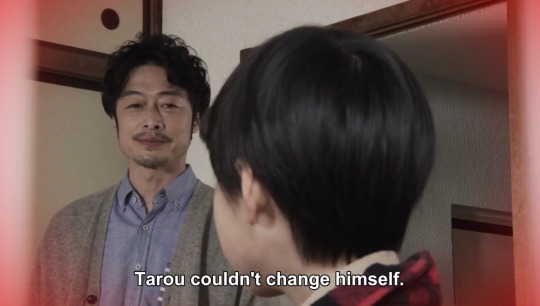
"Whether or not we realize it, all humans employ these rituals and habits to help us regulate ourselves—soothe ourselves, calm our minds and bodies, and help us cope. Perhaps, like many people, you find public speaking unnerving. To calm yourself, you might take a series of deep breaths or pace back and forth while you speak. That’s not exactly the way humans typically breathe or behave in public, but an observer would not judge this as deviant behavior. The person would understand that it’s your way to cope with the stress of the situation and to soothe your nerves so that you can do your best.
When I return home from a day of work, I immediately check the mailbox, then sort the mail, placing bills in one pile, magazines in another, and tossing what I don’t need in the recycling bin. It would take a significant distraction for me to skip that small but important ritual; then I would feel out of sorts on some level until I took care of it. It’s a calming routine; it’s how I come home.
For people with autism, comforting rituals and coping mechanisms come in all varieties: moving in particular ways, speaking in various patterns, carrying familiar items, lining up objects to create predictable and unchanging surroundings. Even proximity to certain people can serve as a regulating strategy. After coming home from a busy school day, Aaron, who was eight, had a habit of placing both palms on a table in front of him and then rhythmically jumping in place. His parents noted that the intensity and duration of his jumping were a good barometer of how stressful his day had been. Just as infants are comforted and soothed by being rocked, and toddlers run in circles to stay awake, we all use movement to modulate our emotional and physiological arousal.
If people with autism feel underaroused, they increase their alertness by spinning, bouncing, or swinging. If they’re overstimulated, they might calm themselves by pacing, snapping their fingers, or staring at a fan.
Ok. Let's take a break from quoting LOL!
I bolded this part because it really stood out to me; things were beginning to make a lot of sense with this knowledge in the back of my mind as I re-examine some of Momoi’s behaviors.
What does Momoi do every time he transforms, or right before he does something crazy? He laughs.
"WAHAHAHA." <-He does this because it helps increase his alertness.
Likewise, in episode 7, why do you think Momoi got out his fan right before he aggravated the MOTW? It's because he was upset at his comrades being attacked and he needed something comforting to focus on, to help him calm down. After he gets it out he starts laughing --> He's ready to be Don Momotarou.
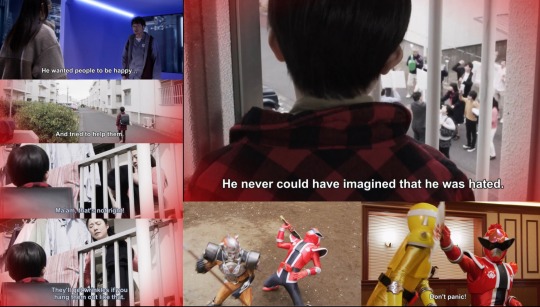
Tarou needs to "flip on" his Don character when he goes into fighting because it makes having to fight a possibility for him. He's changing the script from "battle" to "play/game".
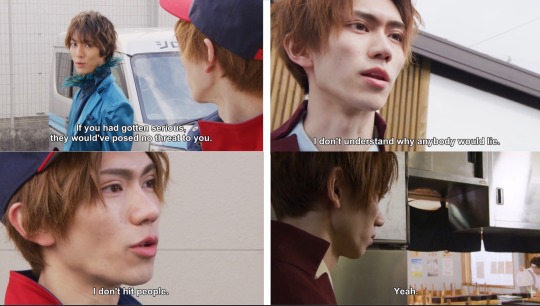
Un-transformed he says "I don't hit people" and this is true.
But transformed he does; like in this Haruka example listed by Hebi anon. He does (hit people) because he has to and this helps him cope with that.
Now, so why did he hit Haruka / attack his comrades? >:)
Quote: (Uniquely Human)
Seeking to eliminate behavior without fully understanding its purpose is not only unhelpful; it also shows a lack of respect for the individual. Worse, it can make life more difficult for the person with autism. That was the case for Lucy, an eleven-year-old. Her public school teachers had reported that Lucy, who did not speak, was an extremely aggressive child, prone to unpredictably lunging and clawing at the faces and necks of teachers and therapists. When I spent a morning observing her in my role advising the district, the problem became clear. Much of the work the educators and therapists were doing with Lucy consisted of matching exercises; they repeatedly asked her to match pictures and images on cards or to point to pictures on command.
I quickly deduced why Lucy appeared to be springing at her teachers. In the midst of the activity, the assistant abruptly changed course. She stopped showing pictures and instead wrote Lucy’s name on a card, placed it in a row with other cards, and asked the girl to identify it. Almost immediately Lucy dove toward the young woman, trying to pull on her blouse in protest.
Why?
The therapist had shifted the pattern, changing the rules without warning.
When a highly anxious child craves routine to understand the world, it’s no wonder a sudden change throws her off. To test my theory, later that day I watched Lucy stroll with a teacher along a familiar school hallway. Then I suggested that the teacher alter the route from the usual routine. When she did, Lucy, suddenly upset, again lunged and grabbed at the teacher’s neck and blouse just as she had before.
It was clear that the grabbing wasn’t aggressive behavior; it was a plea for support at a moment of extreme confusion. Lucy didn’t intend harm. She was confounded during a familiar activity; she had become more anxious and dysregulated, approaching a state of panic.
....
So Momoi didn't intend on harming Haruka here, but because he spent the entire episode ill and vulnerable, what was routine had been changed. He did this as "a plea of support at a moment of extreme confusion." Basically, the power dynamics in their "play" shifted. He had been relying on Haruka (when he usually doesn't rely on anyone, mostly always in control of the battle) and by throwing her he's doing it to show thanks.
"I am able to be myself again. You helped me go back to being a hero." (Play his role)
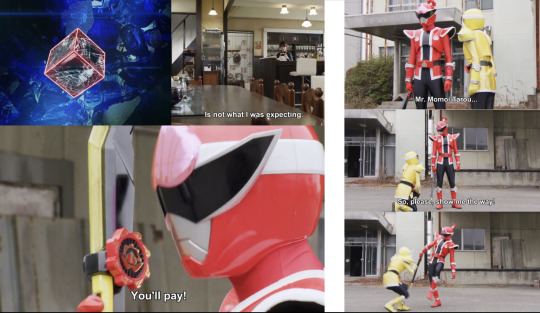
Haruka had shifted the pattern, changing the rules. Likewise, when they went to defeat the monster in episode 3 and FAILED -- she swears fealty and he responds by kicking her and then attacking his teammates (LOL). This is because Sononi disrupted the pattern (defeat monster, save person). She interrupted the routine and killed the monster/human and Momoi didn't know how to regulate himself. Therefore he chose to attack his teammates.
Esp because he only attacked Haruka AFTER she swore fealty, so basically, she was saying "yeah I'll be ur helpful sidekick" and at that moment Momoi needed help getting rid of his anxiety/aggression/confusion at the routine being disrupted and a person being killed.
In episode 7 they ask him "yo, if we're ur companions why did u attack us?" And Momoi said it was to train them so 'they wouldn't hold him back'
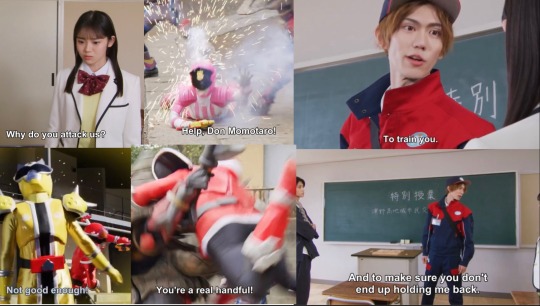
For me, I think what Tarou's really trying to communicate, is that he attacks them because HE sees it as a way to protect his friends from being harmed. The first time he ever attacked them was in the episode where his routine was interrupted and they failed to save someone. I don't doubt this made Momoi upset, and anxious. He doesn't want his friends to die like that monster did and he doesn't want more monsters to die (in general) therefore --> attacking his teammates = training = they can protect themselves and save monsters ergo his routine won't get interrupted and they won't be "holding him back"
"Holding him back" can also metaphorically mean emotionally. Like instead of holding him back cuz they're weak, it's more they're holding him back because if he's busy being worried/anxious about them he won't be able to focus on the battle.
...
Another book I read for research "The Reason I Jump: The inner-voice of a 13-yr-old Boy With Autism"
(Notably, the boy who wrote/answered the questions asked in the book was 13 at the time, and also he's Japanese as well, so I’d say it’s culturally relevant. I knew it would be nice to have varied voices/sources. So I included this.)
"Sometimes, people with autism speak with a strange intonation, or use language in a different way. Non-autistic people can sort out what they want to say in real- time, while they’re having their conversation. But in our case, the words we want to say and the words we can say don’t always match that well. Which is why our speech can sound a bit odd, I guess. When there’s a gap between what I’m thinking and what I’m saying, it’s because the words coming out of my mouth are the only ones I can access at that time. These words are either available because I’m always using them or because they left a lasting impression on me at some point in the past. ."
Now this next quote I'm putting down is because it directly reminded me of Haruka, Haiku, and Momoi's episode 4 Cafe conversation. The scene starts with Haruka and Haiku bombarding Momoi with questions.
"You normal people, you talk at an incredible speed. Between thinking something in your head and saying it takes you just a split second. To us, that’s like magic! So is there something wrong with the circuitry in our brains? Life’s been tough for people with autism, pretty much for ever, yet nobody’s really been able to identify the causes of autism. For sure, it takes us ages to respond to what the other person has just said. The reason we need so much time isn’t necessarily because we haven’t understood, but because by the time it’s our turn to speak, the reply we wanted to make has often upped and vanished from our heads.
“I don’t know if this is making a whole lot of sense to you. Once our reply has disappeared, we can never get it back again. What did he say again? How was I going to answer her question? ... Search me! And all the while, we’re being bombarded by yet more questions. I end up thinking, this is just hopeless. It’s as if I’m drowning in a flood of words."
Momoi's reaction and response here now make a lot more sense, right? You can actually visibly see how Momoi is taken aback by all their questions. He looks uncomfortable. Unsure.
Vulnerable.
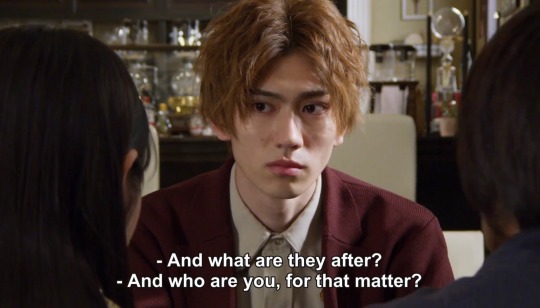
He isn't condemning them or mocking them and saying "just do what you're supposed to do, why are you asking questions." He genuinely doesn't know and he's anxious from all the questions they spring upon him. He doesn't even know how to answer the first one and he's drowning in all their words.
Like, is it really a wonder he stood up, turned AWAY from them (not looking at them) and instead went and sat at a counter before asking his question?
And what he asked was if it was really necessary to know the reason for everything. Now, consider this, what if this is another echo of things he's heard? Perhaps how Jin has responded to his questions before?
He's anxious and stressed from their questions, it wouldn't be surprising if he fell back on a response he's heard before.
.....
This below quote reminded me of the end of episode 4 when Momoi's job is essentially finished and so he stops showing up to the Oni-giri shop/the consultant work place. AND the added cut to him being alone by the pier.
"‘Ah, don’t worry about him – he’d rather be on his own.’ How many times have we heard this? I can’t believe that anyone born as a human being really wants to be left all on their own, not really. No, for people with autism, what we’re anxious about is that we’re causing trouble for the rest of you, or even getting on your nerves. This is why it’s hard for us to stay around other people. This is why we often end up being left on our own.
The truth is, we’d love to be with other people. But because things never, ever go right, we end up getting used to being alone, without even noticing this is happening. Whenever I overhear someone remark how much I prefer being on my own, it makes me feel desperately lonely. It’s as if they’re deliberately giving me the cold-shoulder treatment."
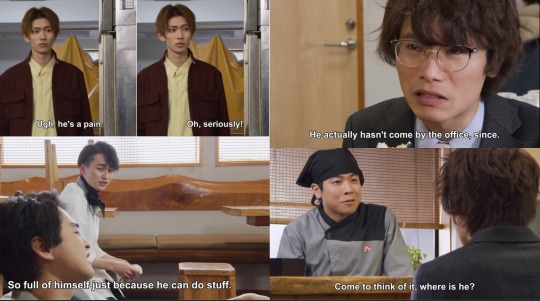
(Honestly this BREAKS my fkin heart. Because this is so obvious in that lonely pier shot of his. Just the contrast of the people celebrating at the Onigiri shop, and Momoi all alone, staring off into the distance at the deep waters in front of him.)
To me -- at this point, it's painfully obvious that Momoi is on the spectrum. (IMO. He’s at least exhibiting a lot of traits / is coded that way) I know you (Hebi anon) said you had trouble with his behavior or the things he says, but when you look at it through this lens it all starts to connect.
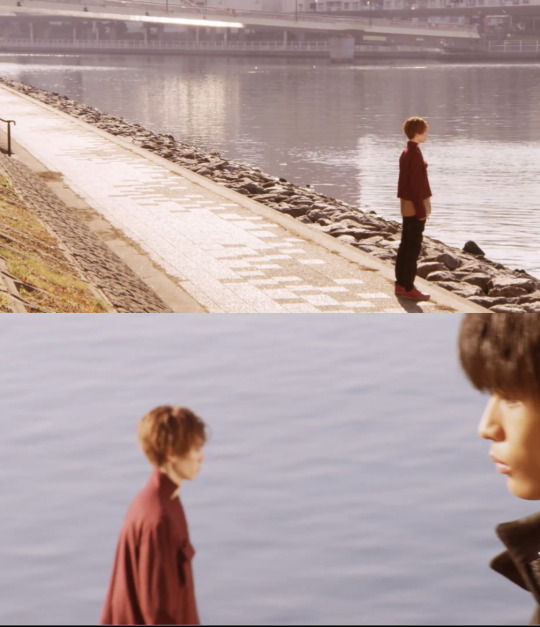
First, I need to say, Momoi isn't doing ANY of this maliciously. Even his attacks on Haruka. If you're like "that doesn't make any sense" -- well, exactly. Because we aren't looking at it from Momoi’s context. When you ask "WHY" and examine his actions and the context it's in, it puts things into perspective.
(Uniquely human quote:)
That’s a common theme in the children with whom I have worked. Animated movies of all kinds hold a particular fascination for children on the autism spectrum, capturing their attention like almost nothing else. Why?
Many children find the predictability and consistency of animated characters (as well as the music) comforting, a welcome contrast to the unpredictable nature of real people in everyday situations. In Monsters, Inc. or Madagascar, the characters’ vocal, facial, and body language is exaggerated, making emotions easier to decipher for such children. People with autism also find the clear delineation of good and evil characters an appealing alternative to the more nuanced gray areas they encounter in real life. And repetitive viewings engender a reassuring sense of familiarity and mastery.
--> This is why Don Momotarou is so....animated and exaggerated.
And for why he laughs, or repeats phrases? Like the "It's a festival!" Phrase? It's delayed echolalia, or scripting.
Echolalia is something that can be seen as a one commonality for a good handful of people on the spectrum. Essentially they're echoing the words / phrases of things that they hear. And this can be for MULTIPLE reasons.
(1) Because they like saying the phrase and it gives them comfort.
(2) To ask a question
(3) As a self-soothing ritual or coping mechanism to help them with their situation.
etc. etc. etc.
To share an example….yes from Uniquely Human 🤪:
“One day we had the children create an art project with paints, but instead of paint brushes, they used pieces of sponge. Afterward David discovered bits of the cut-up sponge on the floor of the classroom. Just as he had with the fuzz balls, he began picking them up one at a time, closely examining each as he rubbed it between his fingers, savoring the texture. “That’s a piece of sponge,” I said. “That’s a piece of sponge,” he echoed. “That’s a piece of sponge, sponge, sponge!” Again I could see the joy he derived from the combination of the feeling of the material and the sound of the words coming out of his mouth. As he clutched the bits of sponge in his cupped hands and looked at the others on the floor, he began to dance around the room on tiptoes. “That’s a piece of sponge, sponge, sponge!” he kept saying. “That’s a piece of sponge!” The real revelation came the next day. By then the classroom had been cleaned. We had cleared away the art project and someone had straightened up and vacuumed away all the debris. When David arrived in the classroom, though, he returned to exactly the spot in the room where a day earlier he had come upon the sponge bits. I watched as he repeated his dance, shifting his gaze to me and saying, “That’s a piece of sponge, sponge, sponge! That’s a piece of sponge!”
Consider this:
What if a visitor had happened into the classroom that day to observe the children? Imagine such a person watching this little boy coming into the room, full of energy, and then performing a little dance and babbling on about a sponge. The visitor might easily have dismissed the behavior as absurd. Or silly. Or random. The visitor might have questioned David’s grip on reality—or at least his understanding of the word sponge.
But if you had been in the room the previous day, if you had shared the conversation with David that I did, if you knew about his enthusiasm for new textures, then you would have understood exactly what was going on. This little boy was recounting his experience of the previous day—not only the facts of the experience (the materials used in the art project) but, more important, his own feelings of excitement about it.
He was telling a story."
(end quote example.)
So what story is Momoi telling? Well, I'd like to examine that scene in episode 4 -- the flashback to Momoi's past.
When he sees those protestors he says to Jin:
"Its a fun festival!'
Now, I'm beginning to realize he didn't say that just because he thought that was what it was. He's echoing something he probably heard Jin or someone else say -- the time they went to a festival. More than that he's probably asking a question: It's a fun festival, Jin! -->Look at all the people gathered! Why are they gathered? Are they celebrating? What's going on?
He's asking a question, through delayed echolalia as well as making an observation.
Here's another example (from Uniquely Human, I really recommend reading it LOL) :
"Often children use echoes to tell us what they’re thinking, but rarely in ways that are immediately obvious. The father of Kyle, a young boy with autism, once invited me to join the two of them on a sailboat in Narragansett Bay, Rhode Island. In the middle of a lovely afternoon, we were anchoring in a little cove when the boy began running up and down the deck as he anxiously leaned over to peer into the water. “No dogs! Dogs bite!” he kept saying with increasing urgency, looking back at his dad. “No dogs! Dogs bite!” No dogs? We were out on the water, with no other boats nearby—no people, no animals. Just waves and wind. What could he have been talking about?
His father knew exactly what he meant. “He’s asking if he can go swimming.” I asked the father to explain.
He told me that Kyle had a fear of dogs. When he felt anxious about his safety, that was how he expressed it: “No dogs! Dogs bite!” Now he wanted to go swimming in the shallow cove, but he wasn’t sure whether this was a safe place, so he was asking. With that phrase he accomplished three things: he expressed his fear, requested permission from his dad, and made sure it was safe. And when his father responded “It’s okay, it’s safe! No dogs!,” Kyle jumped in with great glee."
This example.....is so good. Now some of what Tarou says or does makes a lot more sense.
When he goes into battle he scripts it as "a fun festival" because he's using an echo of a fun experience from his childhood, an experience that obv left a lasting impression. One that can comfort him, or that he can use to cope with being thrown randomly into battles and fighting.
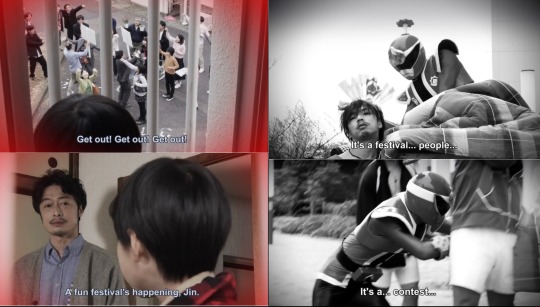
It's not so scary if he's a hero, right? Like the ones in his fairytales. Because heroes ALWAYS beat the bad guys.
Even more than that -- he can deal with it if its a game or contest or festival. "This isn't a scary life-or-death experience. This is a fun game!" This is how Momoi copes.
Now, onto Momoi and his thing with mistakes/weaknesses:
(Taken from An Autistic Japanese 13 yr old's own account)
“When I see I’ve made a mistake, my mind shuts down. I cry, I scream, I make a huge fuss, and I just can’t think straight about anything any more. However tiny the mistake, for me it’s a massive deal, as if Heaven and Earth have been turned upside down. For example, when I pour water into a glass, I can’t stand it if I spill even a drop.
It must be hard for you to understand why this could make me so unhappy. And even to me, I know really that it’s not such a big deal. But it’s almost impossible for me to keep my emotions contained. Once I’ve made a mistake, the fact of it starts rushing towards me like a tsunami. And then, like trees or houses being destroyed by the tsunami, I get destroyed by the shock. I get swallowed up in the moment, and can’t tell the right response from the wrong response. All I know is that I have to get out of the situation as soon as I can, so I don’t drown. To get away, I’ll do anything. Crying, screaming and throwing things, hitting out even…
Finally, finally, I’ll calm down and come back to myself. Then I see no sign of the tsunami attack – only the wreckage I’ve made. And when I see that, I hate myself. I just hate myself."

Ok. I'll end my essay here.
I just want to say, Momoi's action make sense if you look at it from his context with a lens of what people who are autistic / on the spectrum are like. Sorry for such a long response man :x,
#hebi anon 🫡🤝💋#I...honestly I don't know if you'll get anything out of this LOL#anyways I think its real easy to judge Momoi esp cause#he's good at a lot of things and kinda stoic#But believe me homie he really REALLY needs help for social things#my thougts#avataro sentai donbrothers#donbrothers liveblog#donbrothers#donbrothers analysis#donbrothers meta#9 peach falls#before harvesting season#who let delivery boy bring a parade float to a gun fight#sentaisouped#asks#momoi tarou
9 notes
·
View notes
Note
ALSO. since this has been in my head but I keep forgetting to ask.
can everyone see ghosts or is it (as it's implied with Shirley) a Special Case sort of thing? the reapers round up ghosts, right? aren't there some who would rather just. exist among the people of this dimension than pursue ghosts?
REAPERS can see them then right? is Goose aware that his baby momma is still out there? how does she feel about Goose and Blondee? Kibi? is she unaware? etc etc
how difficult is it for a spirit and a non-spirit to communicate? is possession a thing that exists in this world?
The ability to see ghosts is definitely not a common thing for people. Reapers can see spirits at their own volition & non-reapers gain the ability when the spirit directs their energy into being perceived (i.e. ghost uses their energy to “take hold” of someone’s mind so they can be seen. Technically a form of possession as it is done without consent to living person)
Reapers were created to round up lost/dangerous spirits and send them to a fitting afterlife, but that doesn’t mean they can’t live a regular life!! Some choose to not actively hunt spirits and live their lives in their physical forms and just, exist like normal people!
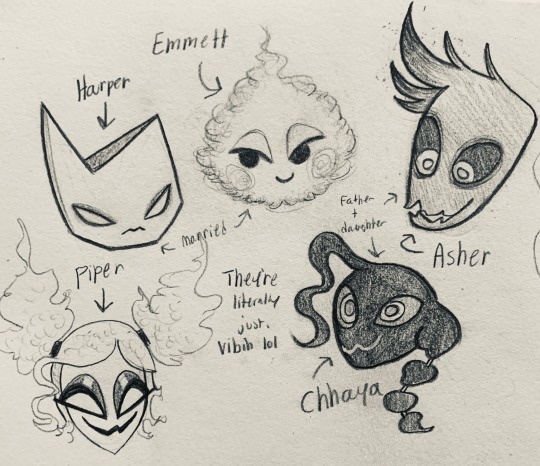
^^ some peeps that aren’t the main ones I draw just to show that there is a decent amount of non reaping reapers! (They still have the power to see/interact with ghosts, it’s just not their main thing)

(^^ damn, I cant believe we leave our ghost problems to these fuckers lol)
Goose is absolutely oblivious to the current state of Dahlia, and it will remain that way 😭 She wants him to move on and go on to live a happy life, so when Blondee comes round...
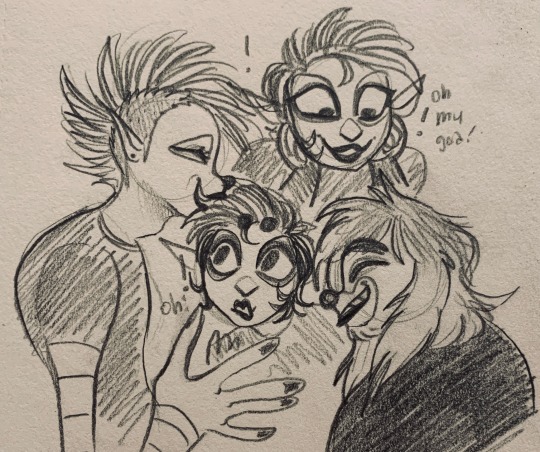
She is ALL for it lmao it’s like watching an irl drama that’s on all the time lol she thinks they’re cute (and she finally figures out why Blondee lowkey hated her when they were teens 😭)
As for her daughter, Kibi’s actually the reason she’s (Dahlia) is still around. She wanted to see her daughter so bad that it manifested into her being being stuck between life and afterlife (Dahlia died when Kibi was born, and she only got to see her after she died)
She enjoys watching her grow up, she’s goofy like her dad and is into weird things like she was
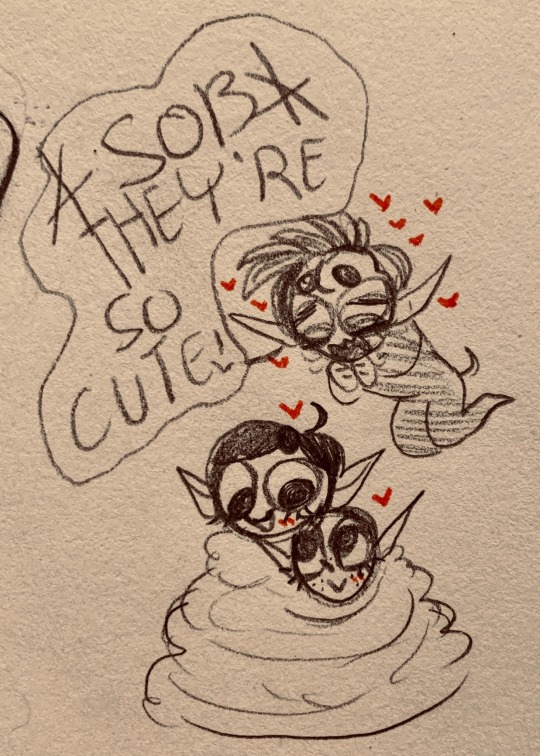
When it comes to how hard communication between the living and dead is, it really depends on many things. First it depends on the method of communication, messing with technology is pretty easy for any spirit as even a wave of the hand can mess with phone signals. Moving physical objects is difficult for average spirits but is easy for those with a better grasp on their power and influence. Possession of the mind (voices in head, visions, etc) use a lot of energy but can be done by all spirits. Fullbody possessions can only be done by spirits labeled as “Dangerous” as it shows their power.
But yes, possession is a thing :)
#pea art#about my ocs#traditional art#oc Dahlia#oc Kibi#oc Grayson#oc Goose#oc Blondee#oc Ginevra#oc Carolina#oc Harper#oc Emmett#oc Piper#oc Chhaya#oc Asher#oc ask#my art#ask#asked and answered#artists on tumblr#artist#my ocs#ocs#oc#my oc#original character#original characters#my characters#holy SHIT that’s a lot of writing hdhdhdhdh but I really enjoyed talking about this !!!!!!!!! thank you I lov u!!!! 💜 😭
8 notes
·
View notes